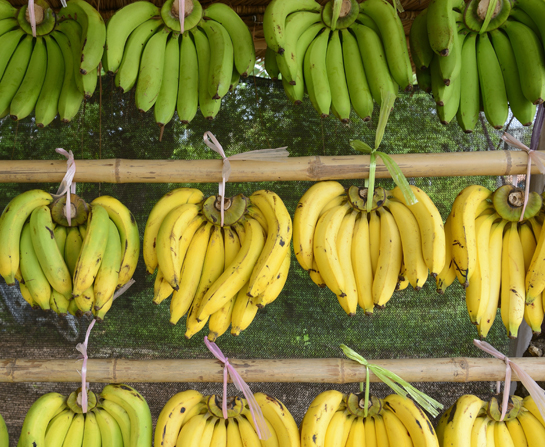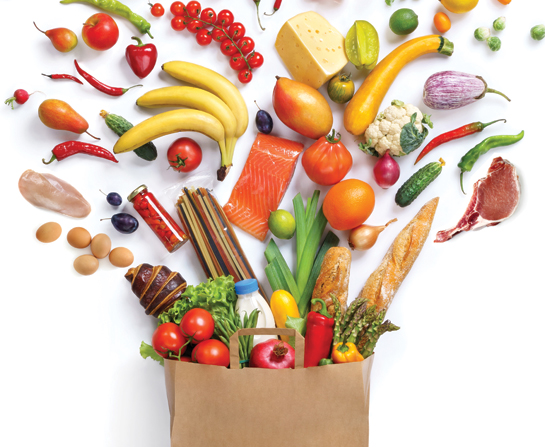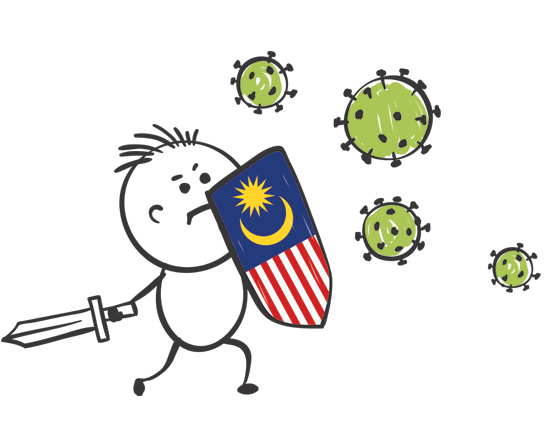When Life Gives You Lemons
May 8, 2022 Return

WORDS PANK JIT SIN
Ahhh! Lemon! The fruit that’s synonymous with health and ironically, a hard life. As the saying goes, when life gives you lemons, make lemonade. Which means you make the best of your situation. But we should all be so lucky as to be given lemons, literally. The fruit, like all citruses, is versatile and potent. Information abound on the Internet and in hearsay about the benefits of lemon, but do you know if those are true? Let’s delve deeper into lemons and see what else we can get apart from lemonade.
WHAT ARE LEMONS?
Lemons belong to the same genus or group of plants known as Citrus. We are probably more familiar with citruses such as orange, lime and pomelo. Some lesser known citruses are the upcoming finger lime and blood orange. They all have the characteristic fragrant smell when their skin is crushed or damaged, and some have the same scent on their leaves. The unique citrus scent comes mostly from limonene, an essential oil, which also has medicinal purposes.
The genus is thought to have its beginnings in the Himalayas a long, long time ago.
“…there is sufficient evidence it can reduce the severity of the infection and also reduce the risk of developing further complications, in particular pneumonia.”
LIMONENE AS A HEALTH PRODUCT
This essential oil is the largest component of oil extracted from citrus peel and leaves. It has been tied to weight loss, cancer prevention and treatment, and even the treatment of bronchitis. A recent study in Shanghai, China, found that limonene was able to kill lung cancer cells. The researchers aren’t sure of how this happens, but limonene is thought to instruct the cells to kill themselves. There is evidence limonene also works in a preventive fashion against other cancers such as breast and colorectal cancers.
Limonene has been found to prevent fatty liver formation and insulin resistance. Insulin resistance is what comes before the onset of diabetes. In rat studies, by adding limonene to the water given to rats on a high-fat diet, researchers were able to reverse the fatty liver condition in those rats. Their liver and pancreas were restored to pre-disease states!
To our readers, it’s possible that the most important benefit of limonene is weight loss. Research has shown that essential oil extract of key lime (limau nipis, Citrus aurantifolia) can help prevent weight gain, and in fact, led to weight loss in laboratory animals.
LIMONENE IN SCENTS AND FOODS
Limonene is also extremely fragrant, making it a suitable natural scenting agent. It has found its way into soaps, air fresheners, laundry detergents, food flavourings, and cosmetics. A more recent development is the use of citrus oils in aromatherapy.
As a food additive, limonene has many proven health benefits. For one, it is a potent antioxidant and anti-inflammatory agent. Studies on mice show D-limonene (a form of limonene) reduces inflammatory markers in the body and kills bacteria even at low concentrations.
It should be known that limonene is considered a volatile organic compound (VOC). But, anything that has a scent is basically a VOC, so there’s little to worry about unless the VOC comes from paint or plastic.



LIMONENE AND SLEEP
If you are having trouble falling asleep due to anxiety, a few drops of citrus oil in your aromatherapy device can help you fall asleep. Research indicates that limonene particles bind to receptors in the brain and cause a mild sedative effect, thus reducing anxiety and making it easier to fall asleep.
“Lemon plants also have a unique quirk about them— they don’t always fruit even if they have been air-layered or grafted from a fruiting tree.”
VITAMIN C
Citrus fruits are famous for their vitamin C content. While they don’t have the monopoly in terms of vitamin C, citrus fruits do have high vitamin C content among all regularly consumed fruits. Vitamin C content found in citrus fruits comes from ascorbic acid. This is not to be confused with citric acid, which is responsible for the sourness in most citrus fruits. While these two acids tend to occur simultaneously in fruits, ascorbic acid (also called ascorbate) is slightly bitter in taste.
Vitamin C is perhaps most well known as the nutrient whose absence leads to scurvy. The disease is hardly heard of in modern society and used to afflict sailors during long seafaring journeys. Surprisingly though, the disease has seen some pockets of resurgence even among people living in affluent countries such as Australia and the US. These people were malnourished (not to be confused with undernourished), and were overcooking their vegetables. Some were not eating fresh fruits while others were the urban poor with no access to nutritious foods.
Interestingly, while we often think of vitamin C as an antioxidant, that is not its primary function. The nutrient is involved in the formation of collagen, and thus is important in the development and repair of all our body tissues. Additionally, it is important for the absorption of iron, wound healing and the immune system.
While vitamin C may not be a cure for the common cold or other viral infections, there is sufficient evidence it can reduce the severity of the infection and also reduce the risk of developing further complications, in particular pneumonia. Recent scientific studies also point to vitamin C infusion as being potentially helpful in patients with sepsis, which is a bacterial infection of the blood.
PLANTING YOUR OWN LEMON
Lemon grows readily in Malaysian weather. All species of citrus plants grow and proliferate well in our country. In recent times, we have seen new and rare varieties of citrus plants being sold in the nurseries and also as edible fruit in our markets.
Those thinking about keeping citrus plants should have an idea of what they want. For example, a regular shrub of calamansi or limau kasturi will give your family an endless supply of fruit for your drinks.
Lemon plants also have a unique quirk about them—they don’t always fruit even if they have been air-layered or grafted from a fruiting tree. Nobody really knows why (this writer has gone through five lemon plants and only one has ever flowered and fruited for him). No other citrus plant seems to have the same problem.
If you’re a big fan of curry, then keeping a kaffir lime plant around is always helpful. Fresh kaffir lime leaves can improve the appetite of any picky eater in the family. The rind of a kaffir lime is also good for cooking Thai cuisine, as it is found in green curry and other fragrant Thai dishes.
Recently, the finger lime craze also caught up in our country. Made famous by cooking shows such as MasterChef, the small colourful fruit is known as vegan caviar. True to its name, there is nothing special it apart from being aesthetically pleasing. This writer, who has a plant bought during the craze and paid a little over RM100 for it, feels it’s not worth your time keeping this plant. The fruits are small and not very fragrant. Apart from the novelty factor, there isn’t much going for it.
As usual, I end with a word of caution to our readers. The benefits are there but none of them are rock-solid evidence. Natural therapies should be used on a complementary basis to mainstream treatment. Remember to tell your doctor about these natural therapies—if you’re planning to use them—to find out if there is any risk of interaction between the natural compound and the medication.
That’s all. Plant yourself a lemon or citrus tree today! HT
If you like this article, do subscribe here.












